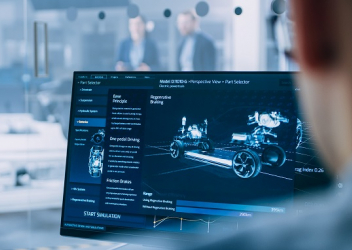Research In Action
Research In Action
Breadcrumb

For a kindergartner, few experiences in life are as special and sought after as losing a tooth. The newly formed gap in a smile represents one thrilling idea: the tooth fairy. But, as I stared down at the white structure in my hands, I thought little of a fairy or money. Instead, I was entranced by the shiny enamel that once existed in my mouth and the system to which it contributed. How did my mouth function with it? How can it function without it? I gained two things from the loss of my tooth: a lisp when I pronounced the letter “s”, and a deep yearning and passion to discover more about the mechanics of the human form.
My lisp has since faded, but my fascination with biological systems and their functionality within the human body has matured and strengthened. I have since utilized every educational opportunity to advance my understanding of how the human form works. One of the most impactful opportunities to do so was through the Injury Science Research Experiences for Undergraduates (REU) Program funded by the National Science Foundation (NSF) at Children’s Hospital of Philadelphia (CHOP).
At the Center for Injury Research and Prevention (CIRP) at CHOP, I evaluated different kinematic and kinetic metrics that determine submarining (a slipping of the lap belt above the anterior superior iliac spines of the occupant during a frontal crash) across naturalistic seating postures in frontal impacts for a 6-year-old pediatric human body model. I conducted this research under the guidance of Jalaj Maheshwari, MSE. I thoroughly researched literature that provided quantitative metrics and thresholds for pediatric submarining, analyzed and extracted data from simulations, filtered and plotted data using Python and LS-PrePost (a post-processing software to visualize results of finite element simulations), analyzed, filtered, and plotted data using MATLAB, and compared results to the submarining thresholds found from literature for 12 separate conditions.
With the mentorship and support of Jalaj, I won the 'Best Presentation' award and was awarded $1,000 at CIRP’s Student Research Day, where student trainees are given the opportunity to share their work. I also had the honor of presenting this important research at the 19th International Conference for the Protection of Children in Cars, was named first author on a paper that details my work which is currently in review at Traffic Injury Prevention, and will be presenting this work at the Association for the Advancement of Automotive Medicine's (AAAM) 66th Annual Scientific Conference. The results of this study could be used to design better booster seats and vehicle systems that discourage postures which could lead to an increased likelihood of submarining-like characteristics.
Through the Injury Science REU Program I gained invaluable experience conducting research from start to end: performing literature reviews, extracting, visualizing and analyzing data, presenting to diverse audiences, and writing peer-reviewed research papers. It is now my goal to continue research related to biomechanics throughout the rest of my studies and career. To help me do so, I will be attending Georgia Tech next fall to pursue a PhD in Bioengineering. This REU experience undoubtedly motivated and prepared me to achieve my future career goals in research.



